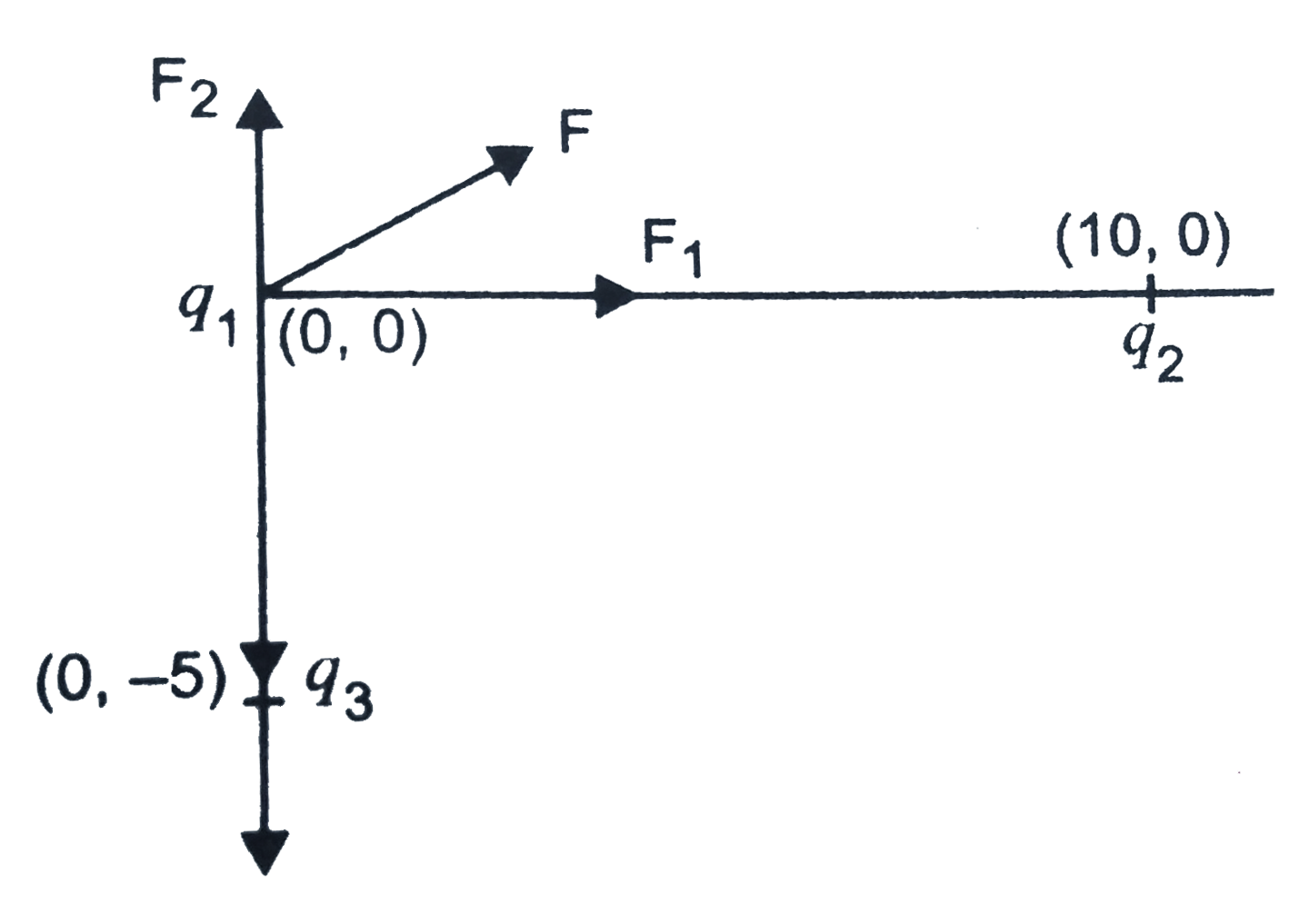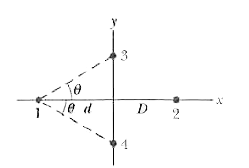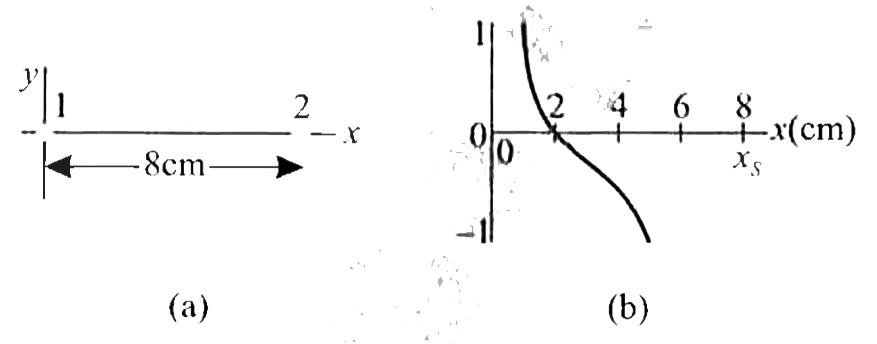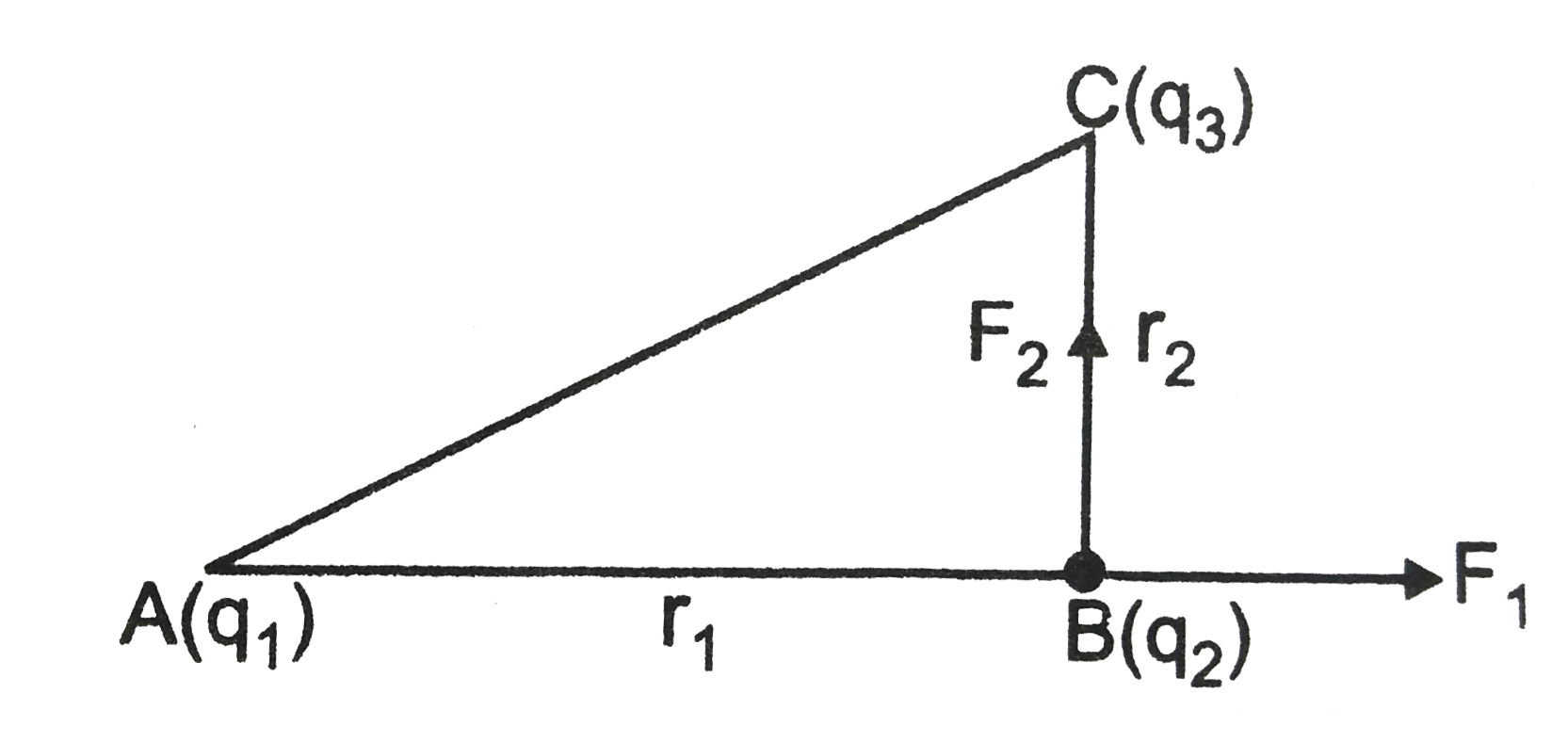In a certain co-ordinate system, charge, q1=−2×10−4C is at x=0,y=0, charge q2=1×10−3C is at x=10m and y=0 and charge q3=1×10−4C is at x=0,y=5cm, Find the magnitude of resultantant force on q1
The correct Answer is:19.4N

Refer to fig
F1 is force on q1 due to q2
F1=9×109×2×10−4×10−3(10)2=18N
F2 is force on q1 due to q3
F2=9×109×2×10−4×1×10−4(5)2=7.2N
As F1andF2 are perpendicular to each other,
resultant force, F=√F21+F22
=√(18)2+(7.2)2=19.4N
Topper's Solved these Questions
- BOOK - PRADEEPCHAPTER - ELECTROSTATICSEXERCISE - FILL IN THE BLANKS8videos
ELECTROSTATICS
- BOOK - PRADEEPCHAPTER - ELECTROSTATICSEXERCISE - PROBLEMS FOR PRACTICE8videos
ELECTROSTATICS
- BOOK - PRADEEPCHAPTER - ELECTROSTATICSEXERCISE - VALUE BASED QUESTIONS7videos
ELECTROSTATICS
- BOOK - PRADEEPCHAPTER - ELECTRONIC DEVICESEXERCISE - Fill in the Blanks1videos
ELECTRONIC DEVICES
- BOOK - PRADEEPCHAPTER - MAGNETIC EFFECT OF CURRENT AND MAGNETISMEXERCISE - Competition Focus (Multiple Choice Questions)2videos
MAGNETIC EFFECT OF CURRENT AND MAGNETISM
Similar Questions
Two point charges q1=2×10−3C and q2=−3×10−6C are separated by a distance x=10 cm. Find the magnitude and nature of the force between the two charges.
View SolutionCharge q1=+6.0nC is on y-axis at y=+3cm and charge q2=−6.0nC is on y-axis at y=−3cm. Calculate force on a test charge q0=2nC placed on X-axis at x=4cm.
View Solution
Knowledge Check
- Question 1 - Select One
If point charges Q1=2×10−7C and Q2=3×10−7C are at 30 cm separation, then find electrostatic force between them
A2×10−3NB6×10−3NC5×10−3ND1×10−3N
The charges and coordinates of two charged particles held fixed in an xy plane are q1=+3.0μC,x1=3.5cm,y1=0.50cm, and q2=−4.0μC,x2=−2.0cm,y2=1.5cm. Find the (a) magnitude and (b) direction of the electrostatic force on particle 1 due to particle 2. At what (c ) x and (d) y coordinates should a third particle of charge q3=+6.0μC be placed such that the net electrostatic force on particle 1 due to particles 2 and 3 is zero ?
View SolutionTwo point charge q2=3×10−6Candq1=5×10−6C are located at (3,5,1)and(1,3,2)m. Find −→F12and−→F21 using vector form of Coulomb's law. Also, find their magnitude.
View SolutionTwo charged particles are fixed to an x axis : Particle 1 of charge q1=2.1×10−8C is at position x = 20 cm and particle 2 of charge q2=−4.00q1 is at position x = 70 cm. (a) At what coordinate on the axis (other than at infinity) is the net electric field produced by the two particles equal to zero ? (b) What is the zero-field coordinate if the particles are interchanged ?
View SolutionFigure shows an arrangement of four charged particles, with angle θ=35.0∘ and distance d = 2.00 cm. Particle 2 has charge q2=+8.00×10−19C, particle 3 and 4 have charges q3=q4=−1.60×10−19C, (a) What is distance D between the origin and particle 2 if the net electrostatic force on particle 1 due to the other particles is zero ? (b) If particles 3 and 4 were moved closer to the x axis but maintained their symmetry about that axis, would the required value of D be greater than, less than, or the same as the part (a) ?
 View Solution
View SolutionIn Fig. a, particle 1 (of charge q1) and particle 2 (of charge q2) are fixed in place on an x axis, 8.00 cm apart.

Particle 3 (of charge q3=+8.00×10−19C) is to be placed on the line between particles 1 and 2 so that they produce a net electrostatic force Fnet=2F0 on it Figure b gives the x component of that force versus the coordinate x at which particle 3 is placed. The scale of the x-axis is set by xs=8.0cm. What are (a) the sign of charge q1 and (b) the ratio q2/q1?View SolutionCharges q1=1.5mC,q2=0.2mCandq3=−0.5mC, are placed at points A,B,C respectively as shown in Fig. If r1=1.2mandr2=0.6m, calculatae magnitude of resultant force on q2.
 View Solution
View SolutionIn Fig., particles 1 and 2 of charge q1=q2=+4e are on a y axis at distance d = 1.70 m from the origin. Particle 3 of charge q3=+8e is moved gradually along the x axis from x = 0 to x = +5.0 m. At what values of x will the magnitude of the electrostatic force on the third particle from the other two particles be (a) minimum and (b) maximum ? What are the (c ) minimum and (d) maximum magnitudes ?
 View Solution
View Solution

